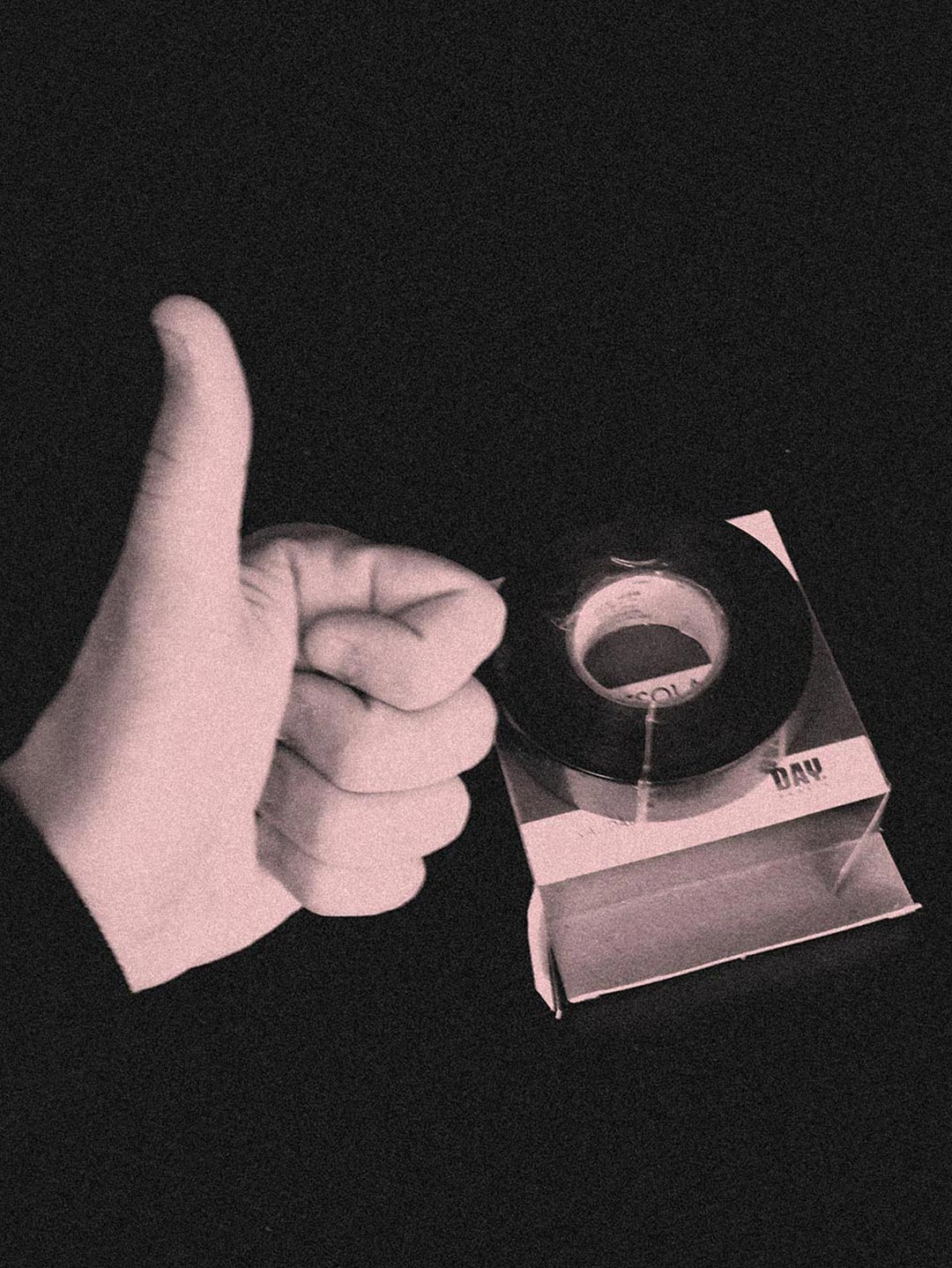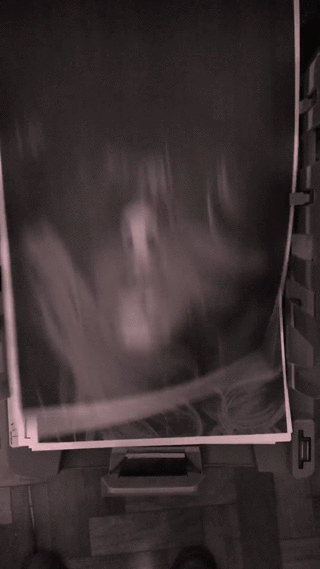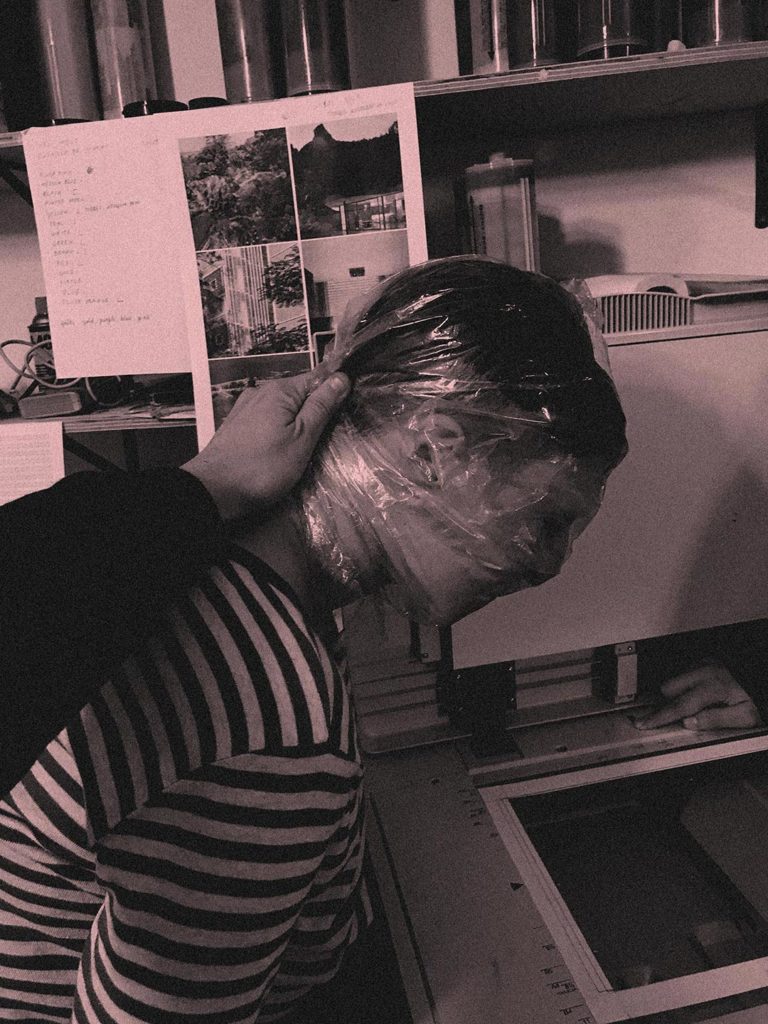POST-
BEAUTY

In April 2017, Sometimes Always and make-up artist Amanda Schon came together to question the codes of a beauty shooting. From the capture technique and make-up tools to the concept of grooming, prettiness and beauty in fashion, the experiment aims to subvert the premises of how beauty is constructed, portrayed and perceived today. The photographic camera gives way to the scanner of the risograph machine; the cosmetics are replaced by utilitarian objects; and the model is the make-up artist herself.




The plan was to create and scan 28 beauty looks in 6 straight hours, through a performance that puts the make-up artist as a receiver of her own work. This story exposes step-by-step the processes and methods undertook by the team through out the six hours of the construction of the project.







First of all, there were some restrictions to work with, meaning that few mistakes could be done otherwise the whole project would go down the hill. A limited quantity of paper was available, as well as a limited amount of risographic ink. There was enough supply for only 50 copies of a 28 pages publication. Schon herself brought the material she was going to use as make-up. Everything was putted on a table and organized in moods. It was decided to work with 7 different moods, where each of them would contain 4 scans, resulting in 28 unique images.
1. Ink
2. Crayon
3. Glitter
4. Plastic
5. Stone
6. Tape
7. Wig
Seven moods meant less than one hour per mood; 28 scans meant 12.8 minutes per image. It all had to be done fast and accurate. Schon placed her little rounding mirror on the table, lighted up a candle and an incense in a corner of the room assembled with some minerals. She sat and started making-up herself while the rest of the team were calibrating the risograph printer.









Once she was ready, the artist would place her head in the scan glass, while someone else would direct her position and another person would press the scan button. In this risograph machine, there is no screen preview. As soon as it is scanned, it is printed. The team would check the hard proof while Schon would stay in the same position facing the glass. If the proof was satisfactory, Schon could head up while someone would type 50 in the machine panel and press the green button. In no longer than a minute, 50 copies would be printed and reserved in a shelf. The machine would be cleaned while Schon would develop her make-up within the working mood. The process would follow for the next five hours non-stop.




At the end of the process, Schon had her face completely scratched and swollen. Most of the moods were built with considerably aggressive materials and techniques. She glued her entire face with glitter and fake stones; stretched her eyes to the limit with tape; covered her head with a plastic bag that wouldn’t let her breathe; and, she had to remove all that after it was done. It was an extreme exercise of strength, self-control and design.



It is interesting to see how the unpredictability of the scanner and the imperfections of print can build a much more urgent and striking image than the sharpness and wealthy details of the digital camera. In terms of make-up experiments, elements that would compose a sweet-girly-look (like wigs and jewellery) resulted in really weird compositions. It was made possible by Schon’s radical approach to disrupt their conventional use. The result is an anti-beauty book scanned and printed on risograph and published in collaboration with Meli-Melo Press.
Super limited edition of 50 copies (we mean it, there is no way to reedit this work). Get your copy here.

Creative direction: Gabriel Finotti and Hick Duarte
Risograph machine operator: Juan Narowe
Special thanks to: Beto Galvão, Nathalia Cury, Alexandre Lindenbergh and Mira
POST-
BEAUTY

In April 2017, Sometimes Always and make-up artist Amanda Schon came together to question the codes of a beauty shooting. From the capture technique and make-up tools to the concept of grooming, prettiness and beauty in fashion, the experiment aims to subvert the premises of how beauty is constructed, portrayed and perceived today. The photographic camera gives way to the scanner of the risograph machine; the cosmetics are replaced by utilitarian objects; and the model is the make-up artist herself.




The plan was to create and scan 28 beauty looks in 6 straight hours, through a performance that puts the make-up artist as a receiver of her own work. This story exposes step-by-step the processes and methods undertook by the team through out the six hours of the construction of the project.







First of all, there were some restrictions to work with, meaning that few mistakes could be done otherwise the whole project would go down the hill. A limited quantity of paper was available, as well as a limited amount of risographic ink. There was enough supply for only 50 copies of a 28 pages publication. Schon herself brought the material she was going to use as make-up. Everything was putted on a table and organized in moods. It was decided to work with 7 different moods, where each of them would contain 4 scans, resulting in 28 unique images.
1. Ink
2. Crayon
3. Glitter
4. Plastic
5. Stone
6. Tape
7. Wig
Seven moods meant less than one hour per mood; 28 scans meant 12.8 minutes per image. It all had to be done fast and accurate. Schon placed her little rounding mirror on the table, lighted up a candle and an incense in a corner of the room assembled with some minerals. She sat and started making-up herself while the rest of the team were calibrating the risograph printer.









Once she was ready, the artist would place her head in the scan glass, while someone else would direct her position and another person would press the scan button. In this risograph machine, there is no screen preview. As soon as it is scanned, it is printed. The team would check the hard proof while Schon would stay in the same position facing the glass. If the proof was satisfactory, Schon could head up while someone would type 50 in the machine panel and press the green button. In no longer than a minute, 50 copies would be printed and reserved in a shelf. The machine would be cleaned while Schon would develop her make-up within the working mood. The process would follow for the next five hours non-stop.




At the end of the process, Schon had her face completely scratched and swollen. Most of the moods were built with considerably aggressive materials and techniques. She glued her entire face with glitter and fake stones; stretched her eyes to the limit with tape; covered her head with a plastic bag that wouldn’t let her breathe; and, she had to remove all that after it was done. It was an extreme exercise of strength, self-control and design.



It is interesting to see how the unpredictability of the scanner and the imperfections of print can build a much more urgent and striking image than the sharpness and wealthy details of the digital camera. In terms of make-up experiments, elements that would compose a sweet-girly-look (like wigs and jewellery) resulted in really weird compositions. It was made possible by Schon’s radical approach to disrupt their conventional use. The result is an anti-beauty book scanned and printed on risograph and published in collaboration with Meli-Melo Press.
Super limited edition of 50 copies (we mean it, there is no way to reedit this work). Get your copy here.

Creative direction: Gabriel Finotti and Hick Duarte
Risograph machine operator: Juan Narowe
Special thanks to: Beto Galvão, Nathalia Cury, Alexandre Lindenbergh and Mira
